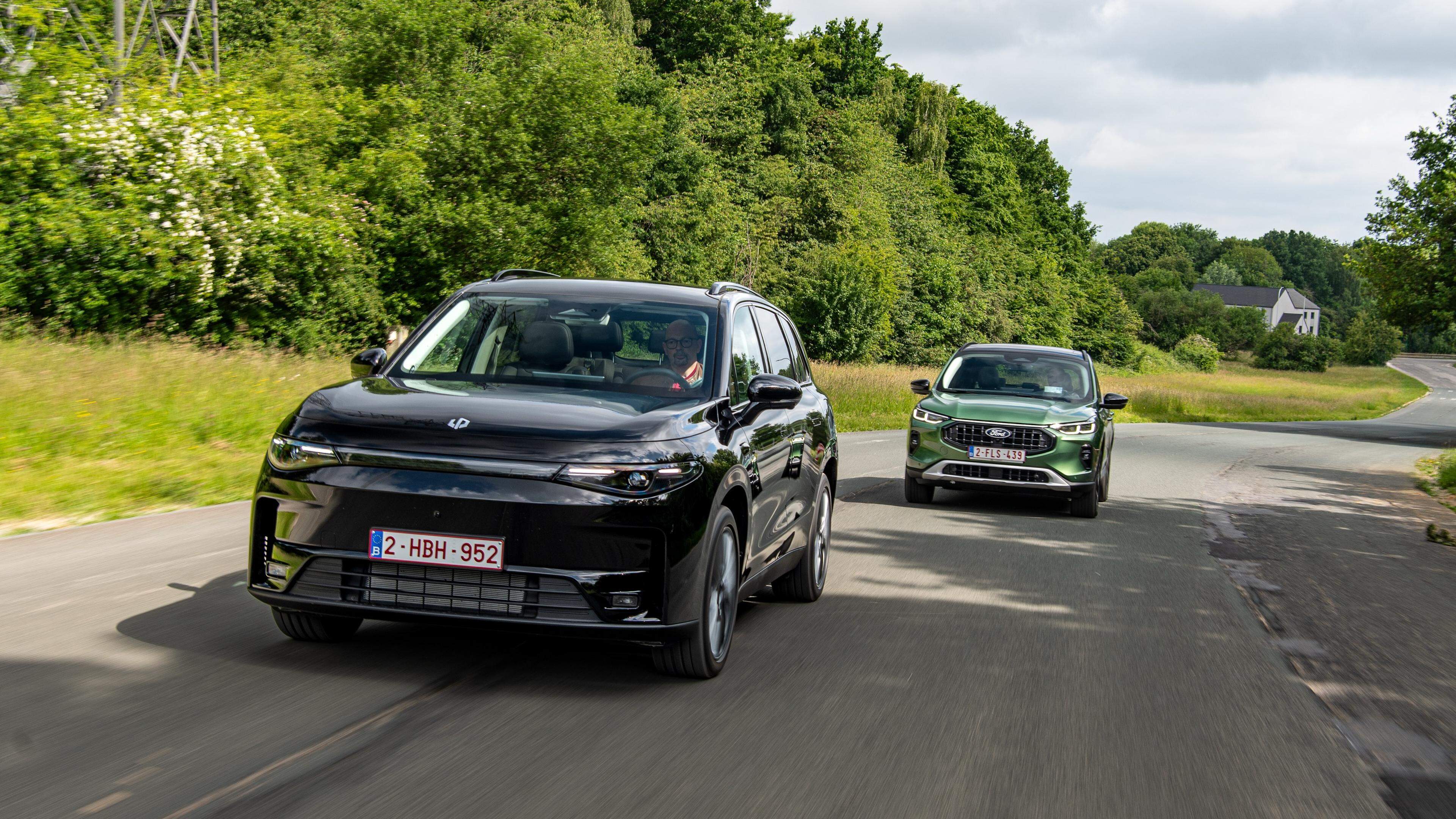Leap engine C10 Reev vs. Ford Kuga PHEV: The alternative to the reference

For several months on the market, the electrical Leap engine C10 has been receiving a combustion engine that acts as a range extender. Specifically: The 215 hp electric motor is fed by a battery that-as soon as it is empty-is recharged by a 1.5-liter petrol engine. The difference to a classic hybrid system is that the petrol engine is neither mechanically connected to the wheels nor with the electric motor. In the Ford Kuga, on the other hand, the combustion engine and the electric motor can be separated or work together and thus provide a system output of 243 hp. The concepts differ fundamentally on this point.
Two worlds
How does that work in everyday life? The 28.4-WAG battery of the LEAPMOTOR enables purely electric driving over 145 kilometers, while the American’s 14.4 kWh promise a maximum of 69 kilometers. In fact, the lead engine made 130 kilometers and proved to be remarkably economical with an average consumption of 17 kWh/100 km in mixed operation. With 20 kWh/100 km, the Ford only came to around 45 kilometers. Both drive smoothly, quickly and quietly in these conditions-as you can expect from an electric car. The leaving engine also scores with its higher performance, which allows sovereign accelerations without activating the internal combustion engine.
The van is dead, long live the SUV? – A test drive in the new VW Tayron
The Kuga plays its strength in hybrid mode: energy management works efficiently and ensures constant reloading and unloading of the battery – which optimizes reach and consumption. The average consumption was 5.4 l/100 km with impressive. If the combustion engine jumps in the lead engine, this is less pleasant: the speed increases clearly audible, has an unnatural effect, since not directly connected to the acceleration. However, in contrast to the Ford, the lead engine can also recharge its battery by means of a DC quick charge-in 18 minutes to 50 percent. Only an AC charger with a maximum of seven kW is installed in the KUGA.
Dynamics vs. comfort
The two SUVs could hardly be more different. The Ford encourages an active driving style with precise steering, tight chassis and agile handling. The lead engine, on the other hand, relies on comfort and gentleness – which is by no means a disadvantage for a family vehicle. However, the poorly coordinated driving assistance systems are problematic. The lane departure assistant intervenes too sensitively and abruptly – sometimes dangerous. The fatigue detection reacts almost accidentally as soon as you look away briefly. After all, software updates should remedy the situation by remote maintenance-also for the missing Android Auto and Apple CarPlay integration. The overall information system of the leaving engine is simple, while the Sync4 system from Ford is more modern and functional. The KUGA also scores with a warmer atmosphere and higher quality materials in the interior design, although the processing quality of the LEAP engine is better.
The Leap motor C10 Reev shows a smooth, futuristic front with continuous LED strips. The Ford Kuga PHEV relies on a striking style with a large radiator grille and angular headlights. Photo: Pierre Fontignies
Unbeatable price
However, the lead engine brings the decisive advantage at the price. The tested top version « Design » with ventilated and heated seats, heated steering wheel, panoramic roof and much more costs 37,400 euros. This means that the lead engine is 6,500 euros cheaper … than the cheapest KUGA PHEV with 43,875 euros. That makes some weaknesses forgive.
Leap engine C10 Reev – Technical Data
-
Motor: Electrical 215 PS / 320 NM + 1.5-liter petrol-range extender
-
Drive: front
-
Gearbox: 1-speed automatic
-
L / b / h (mm): 4.739 / 1,900 / 1,680
-
Empty weight (kg): 1,980
-
Trunk volume (L): 435 – 1,410
-
Battery (kWh): 28.8 (+ 50 l tank)
-
Range (km): over 950
-
0–100 km/h (S): 8.5
-
Vmax (km/h): 170
-
Price (€): 37,400
Ford Kuga PHEV – technical data
-
Motor: 2,488 cm³ gasoline + electric motor, 243 hp
-
Drive: front
-
Gears: CVT
-
L / b / h (mm): 4 .—- / 1,900 / 1,680
-
Empty weight (kg): 1.859
-
Trunk volume (L): 395–553
-
Battery (kWh): 14.4
-
Tank content (L): 42.7
-
0–100 km/h (s): 7.3
-
Vmax (km/h): 200
-
Price (€): 45.375







